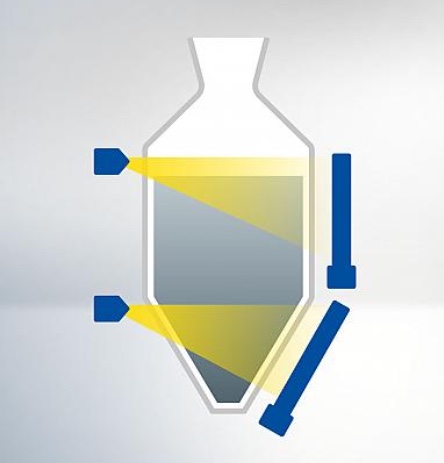Jan-2024
The circular economy as an emerging market in the petrochemicals industry
Within the energy industry, the oil and gas market continues to hold a prominent position, but it is currently undergoing a transition, moving its focus away from crude oil resources for hydrocarbonbased fuel production to instead focusing on chemical manufacturing.
Petroleum Analyzer Company (PAC)
Viewed : 1557
Article Summary
S&P Global Commodity Insights has recently revised its projection for direct crude oil-to-chemical capacity (COTC) growth, anticipating a substantial increase to 6 million barrels per day (b/d) by the year 2050.
This projection takes into account the anticipated decline in crude refinery runs, resulting in a net reduction of 10.7 million b/d when compared to the levels recorded in 2022. As a result, a total investment of $137 billion by 2050 is expected for more petrochemical production (only the refinery portion of the investments is included, i.e., COTC & integrations, excluding further chemicals’ manufacturing process investments).1
Together with drawing a high amount of investment, the petrochemical industry is also undergoing significant transformations in response to market trends and forces. In this light, this article will explore key developments in the rapidly growing and changing petrochemical market, highlighting the growing need for circular economy initiatives and providing selected PAC solutions to help address current and future needs for the analysis of various streams such as waste plastic pyrolysis oil (WPPO), heavy crude for COTC, and bio-based streams to be processed in petchem-FCC or steam cracker units.
Market forces and recent trends shaping the petrochemical industry
The petrochemical industry is currently experiencing a number of trends and market forces that are shaping its future landscape.
Some of the market forces influencing the trajectory of the petrochemical industry include economic factors, public pressure, environmental regulations, and technological advancements. The recent advancements include novel direct feedstock conversion techniques, revamping existing units for higher yields of petrochemical building blocks, improved chemical recycling technologies and advanced catalysis. Companies must navigate through these forces and trends in order to ensure efficiency and make informed investment decisions, providing both uptime and innovation, allowing them to future-proof their existence in the midst of a disruptive era.2
On account of these financial, public, environmental and technological forces, certain trends have emerged that will likely shape how players conduct their businesses, as described below.
Expanding the use of plastics and circular economy incentives
Plastics continue to play a crucial role in various industries, including in the production of green technology, such as electric cars, wind turbines, and solar panels. The total amount of plastics manufactured globally since the early 1900s has reached ~10 billion tonnes, and more than half of this remains in the form of waste.³ This is mainly caused by the low average global recycling rate of plastics, estimated at around 9%.³
The growing concern over plastic waste has led to an increased emphasis on circular economy initiatives. Such drives to increase sustainable plastic consumption and adopt circular economy approaches were underscored at the United Nations Environment Assembly meeting in 2022, in which a consensus was reached to establish a global treaty on plastic pollution by 2024.2,4,5
Decarbonisation attempts and reduced fossil fuel dependency
Mainly triggered by investors and policymakers who are sensitive to ESGrelated topics, companies are seeking alternatives to fossil fuels and are investing in technologies that reduce greenhouse gas emissions in order to mitigate climate change. This is reinforced with global trends in home office working, increased e-mobility, and the desire for greater fuel efficiency, resulting in decreased fossil fuel consumption. Therefore, to remain competitive, refiners are exploring ways to reposition themselves in the field and repurpose existing equipment. This is being managed through a number of strategies such as investments in refinery-petrochemical integrations, fluid catalytic cracking (FCC) optimisations (petro-FCC) for increased propylene yield, propane dehydrogenation (PDH) investments requiring relatively smaller capitals and heavy investments for COTC technologies.2,8
Shrinking margins of refineries
Refineries, which serve as the primary source of feedstock for the petrochemical industry, are facing narrowing margins. This is attributed to factors such as unstable crude oil prices, intense competition, and stricter environmental regulations. As a result, refineries are exploring diversification strategies, investing in petrochemical units, and adopting more sustainable practices to enhance profitability. This has led to a rise in investments in conversion and integration technologies, including COTC conversions.⁶
An illustrative example of this is the recent investment in COTC technology by S-Oil, a South Korean refiner under the ownership of Aramco. Such initiatives are anticipated to set a precedent for numerous upcoming endeavors. It is projected that there will be a noteworthy increase in COTC capacity, with an expected addition of 6 million barrels per day (b/d) by the year 2050.7
Expanding use of bio-based streams and coblending
The petrochemical industry is increasingly adopting bio-based streams and blends to meet sustainability goals and reduce dependence on fossil-based feedstocks. Accordingly, the use of bio-feeds as well as waste plastic pyrolysis oils is on the rise globally. To address profitability concerns, heavy feeds are also being used, though product quality requirements and volatile markets may still drive the technical and economic feasibility of feedstock switching. This underscores the importance of impurity analysis, detailed characterization, and grouptype analysis of heavy oils and newly emerging feedstocks.9
Emerging needs of the market
As a result of the strong forces shaping the market and the trends that are heavily driving the players in their daily operations and future investment decisions, several current and future needs stand out. Those who are willing to contribute to a sustainable future and to ensure long-term success in the circular economy are strongly encouraged to navigate the waves of opportunity by looking into the following:
- Construct economically and technically advantageous business models yielding increased profitability while not exclusively limiting efforts to compliance with stringent regulatory requirements of the circular economy.10,11,12
- Develop sustainable and renewable feedstocks, thereby increasing profitability and decreasing the CO² footprint.13
- Improve infrastructure for effective plastic waste collection.²
- Advanced mechanical and chemical recycling technologies for collected waste.²
- Improve collaborations to establish effective recycling systems and develop sustainable end markets that bolster the industry’s long-term viability.14
- Drive innovation to address the existing challenges in chemical recycling processes, aiming to optimise uptime and, consequently, maximise efficiency.
Add your rating:
Current Rating: 4

















